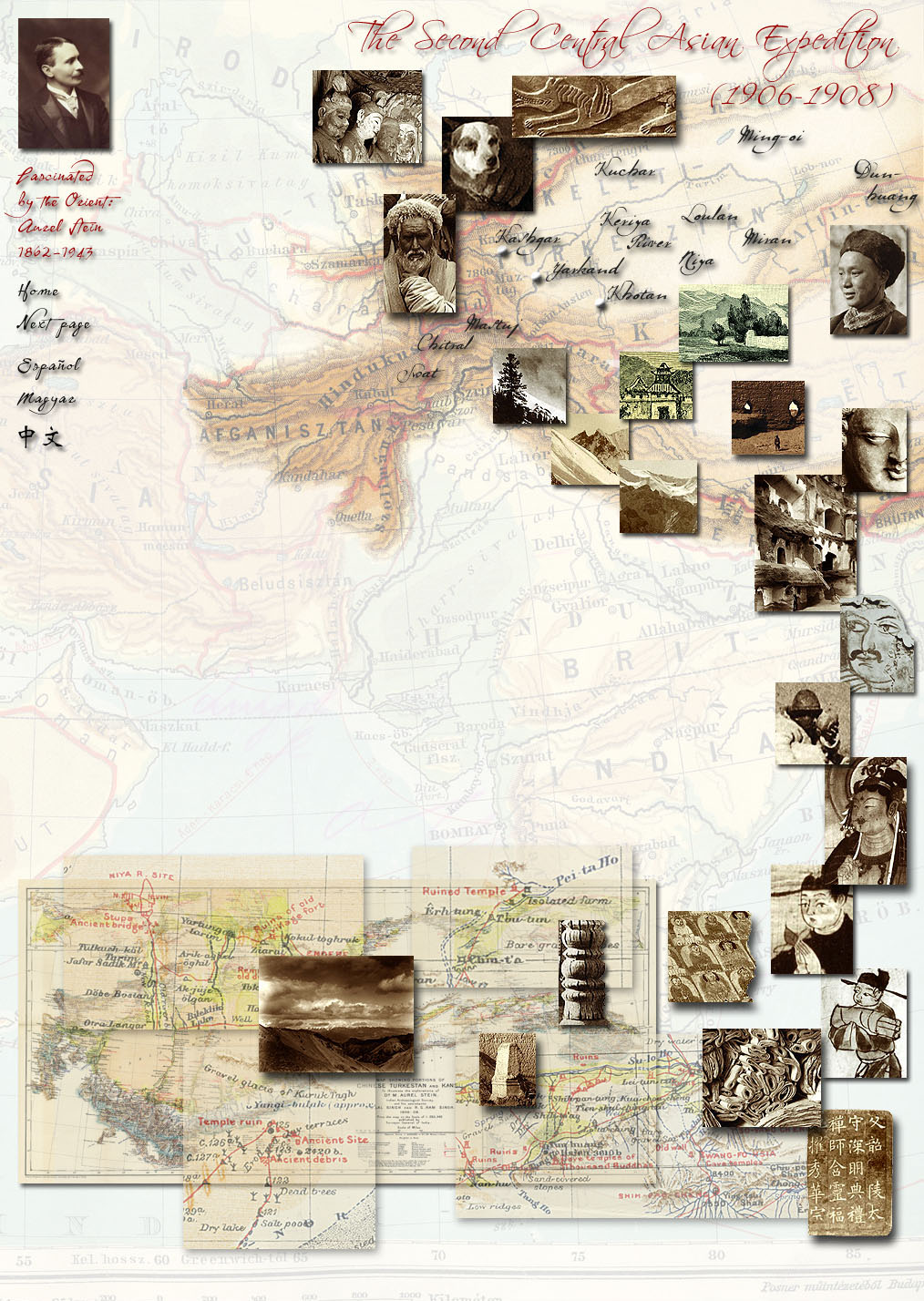the caves of Dunhuang. At the final reach of the Suloho, he discovered some parts of an ancient wall that
he called limes (border defenses). Over the course of two months he surveyed a length of about 220 kilometres,
and found the so-called Yumenguan (Jade Gate). The wall was built in the Han period to prevent the Huns in the north from
invading. In May Stein set off for his next destination: the Caves of the Thousand Buddhas, where one of the most significant
paper archives of the world was discovered by Wang Yuanlu in 1900. In a sealed cave, thousands of manuscripts dating to between
the 5th and 11th centuries, and silk paintings, mainly from the Tang period, were preserved in excellent condition. This discovery gave
a new impetus to studies related to medieval China and Central Asia (see the homepage of our Dunhuang Exhibition).
In June Stein travelled towards the oasis of Anxi. He later began his
cartographic survey in Nanshan, followed by a second winter
excavation season in the Tarim Basin. Covering a distance of 1,400
kilometres from Anxi to Karashahr, he followed the military and trade
routes in use since the Tang dynasty between China and the West. He
surveyed important sites in Hami and Turfan. In December he
began to investigate the Buddhist sanctuaries of Ming-oi, to the
south-west of Karashahr. Having visited Kuchar, he crossed the
Taklamakan from north to south, heading in the direction of where the
Keriya River meets the desert. In February 1908 he began new
archaeological research in Karadong. He
later set off for the source of the Yurungkash River. While surveying
in the Kunlun
mountains, he suffered an accident.
The popular description of the second expedition entitled Ruins of
Desert Cathay was published in 1912. The scholarly results of the
expedition were
published in the five volumes of Serindia (1921).

